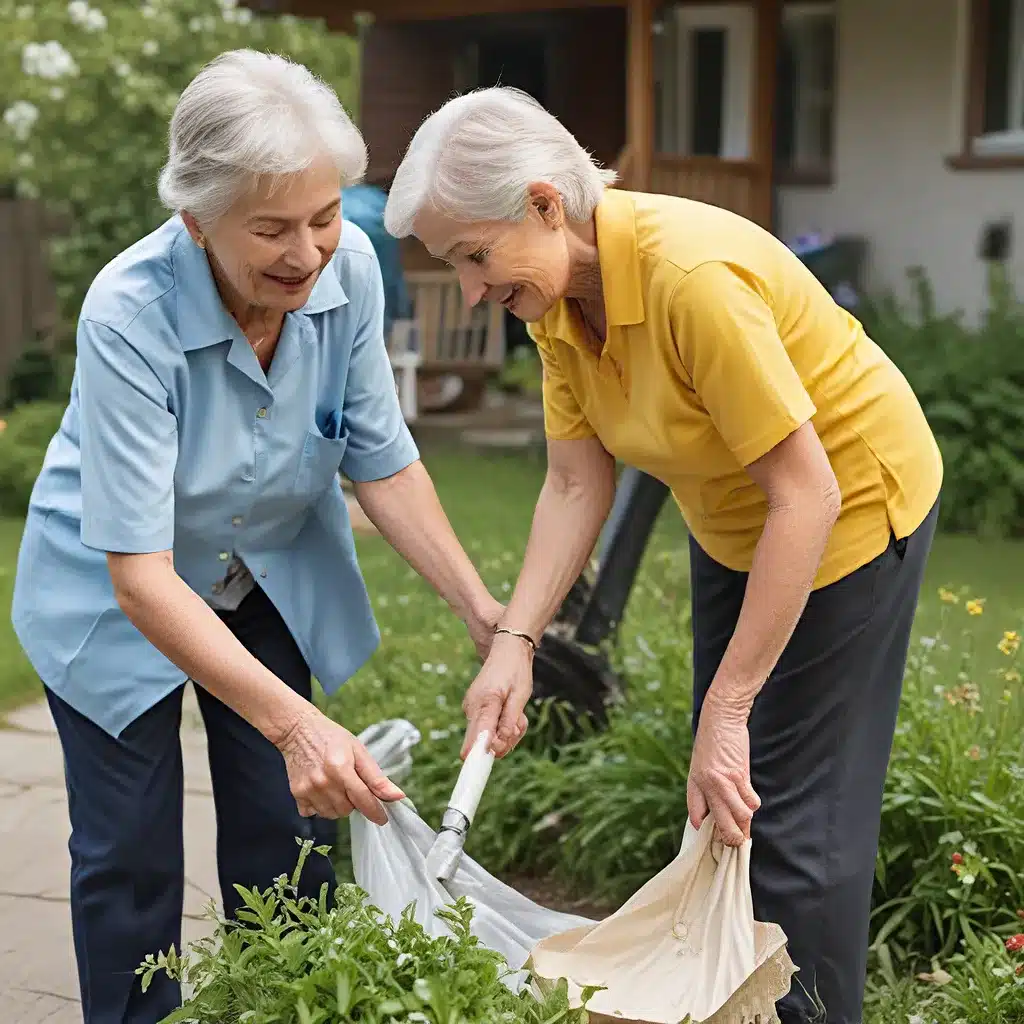Cleaning up our communities is about more than just making things look nice – it’s about protecting the health and wellbeing of those who call these places home. And when it comes to vulnerable populations like the elderly and those with health challenges, this responsibility takes on an even greater significance.
I’ve seen firsthand the impact that environmental hazards can have on our most fragile citizens. Whether it’s toxic waste seeping into the soil, contaminated water making people sick, or simply the blight and neglect that can breed disease, the stakes are high. But the good news is that by tackling these issues head-on, we can make a world of difference.
Take the story of the Pilgrim Village development in Buffalo, New York. This aging, dilapidated housing complex was in desperate need of an overhaul – not just for the sake of appearances, but to protect the health and safety of the seniors and families living there. By partnering with local organizations and tapping into state and federal resources, they were able to completely transform the site, creating brand-new affordable, energy-efficient homes with a focus on accessibility and community wellness.
The new Pilgrim Village isn’t just cleaner and greener – it’s designed to actively support the needs of its vulnerable residents. With on-site services for mental, physical, and emotional health, as well as amenities like a gym, computer lab, and community spaces, this development is poised to be a game-changer for the East Buffalo neighborhood.
And the benefits go beyond just the residents themselves. By revitalizing previously contaminated or neglected areas, these cleanup efforts can have a ripple effect, boosting local property values, deterring crime and blight, and even generating new economic opportunities. It’s a win-win for the entire community.
Tackling Environmental Hazards Head-On
When it comes to safeguarding the health and wellbeing of vulnerable populations, the Superfund program managed by the U.S. Environmental Protection Agency (EPA) plays a crucial role. By identifying and cleaning up the nation’s most hazardous waste sites, this initiative is making a tangible difference in the lives of those who are most at risk.
The stats are staggering – uncontrolled releases of hazardous substances can threaten the health of entire communities, with children, pregnant women, and the elderly often being the most vulnerable. We’re talking about everything from toxic chemicals and oil spills to natural disasters that can wreak havoc on local environments. And the effects can be both immediate (like fires and explosions) and long-term (such as increased cancer rates and birth defects).
But the Superfund program is on the case, working tirelessly to prevent and reduce these risks. Whether it’s isolating the hazardous materials, restoring contaminated natural habitats, or supporting local economies in the aftermath, these cleanup efforts are making a world of difference.
And the benefits go beyond just public health. By revitalizing these previously neglected areas, the Superfund program is helping to create new recreational spaces, habitats for wildlife, and even economic opportunities for the surrounding communities. It’s a true win-win scenario.
Empowering Vulnerable Populations Through Cleanup
But it’s not just about the physical cleanup – it’s also about empowering the people who live in these communities. By engaging with vulnerable populations and ensuring that their voices are heard, the Superfund program is taking a holistic approach to revitalization.
Take the example of the Superfund program’s work in communities. Beyond just tackling the environmental hazards, they’re also considering the long-term stewardship of these sites, working with local stakeholders to ensure that the remedies remain protective over time. This kind of collaborative approach helps to build trust and foster a sense of ownership within the community.
And the results speak for themselves. Across the country, we’re seeing former Superfund sites being reclaimed and transformed into valuable community assets – from parks and recreation areas to housing developments and commercial hubs. It’s a testament to the power of community engagement and the transformative potential of environmental cleanup.
But the work doesn’t stop there. The Pilgrim Village development in Buffalo is a prime example of how state-level initiatives can build upon the foundation laid by federal programs like Superfund. By tapping into a range of funding sources and partnering with local organizations, they were able to create a truly holistic solution that addresses the unique needs of the community.
Promoting Healthy, Sustainable Communities
At the end of the day, cleaning up our communities isn’t just about making things look nice – it’s about safeguarding the health and wellbeing of those who call these places home. And when it comes to vulnerable populations like the elderly and those with health challenges, this responsibility takes on an even greater significance.
By tackling environmental hazards head-on and empowering local communities to take an active role in the process, programs like Superfund and the Pilgrim Village development are paving the way for a healthier, more sustainable future. And as someone who has seen the transformative power of these efforts firsthand, I can say with confidence that this is a cause worth fighting for.
So, if you’re looking to make a real difference in your community, I encourage you to explore the cleaning services offered by Adam Cleaning. Whether it’s helping to revitalize a neglected area, support vulnerable populations, or simply make your own home a safer, healthier place, their team of experts is here to help. It’s not just about a clean surface – it’s about building a better, more sustainable world for all of us.







